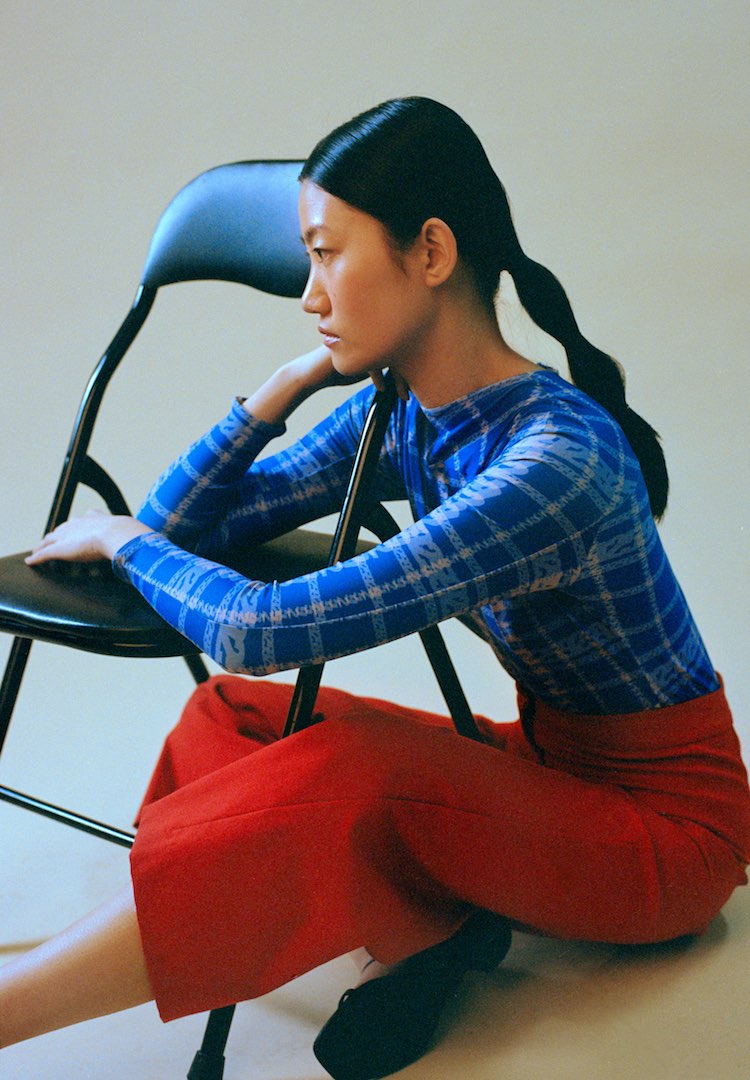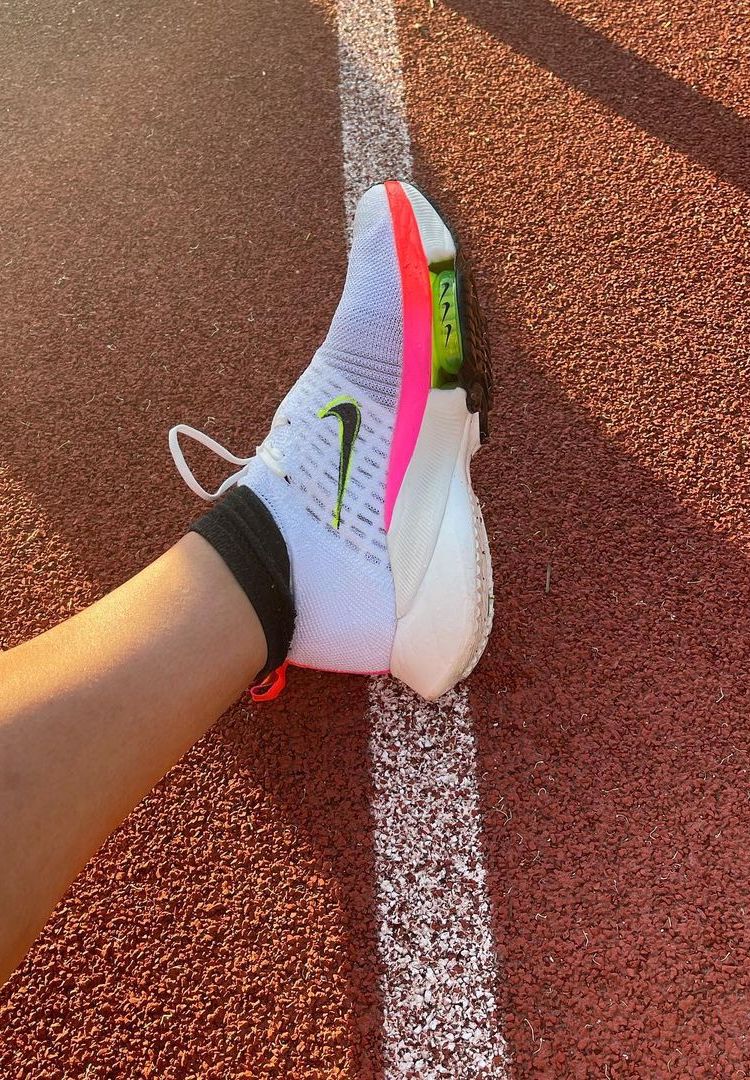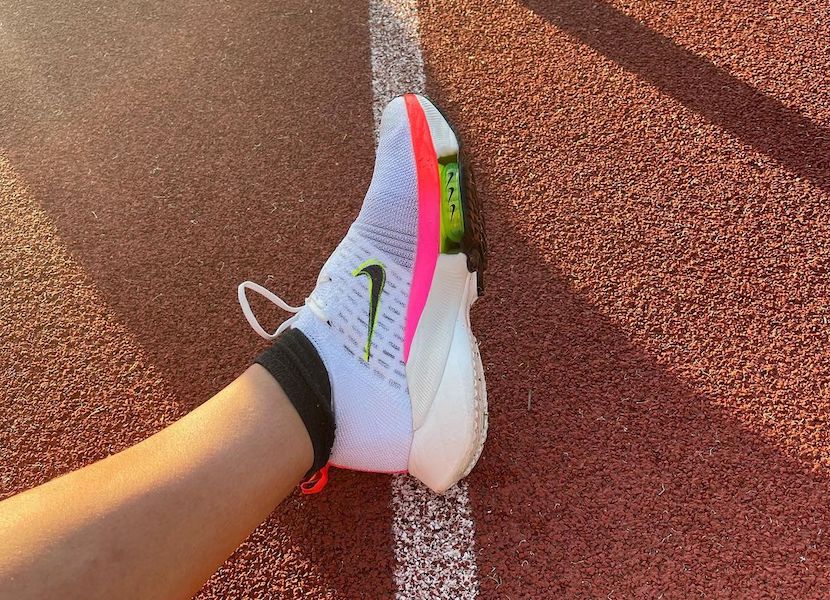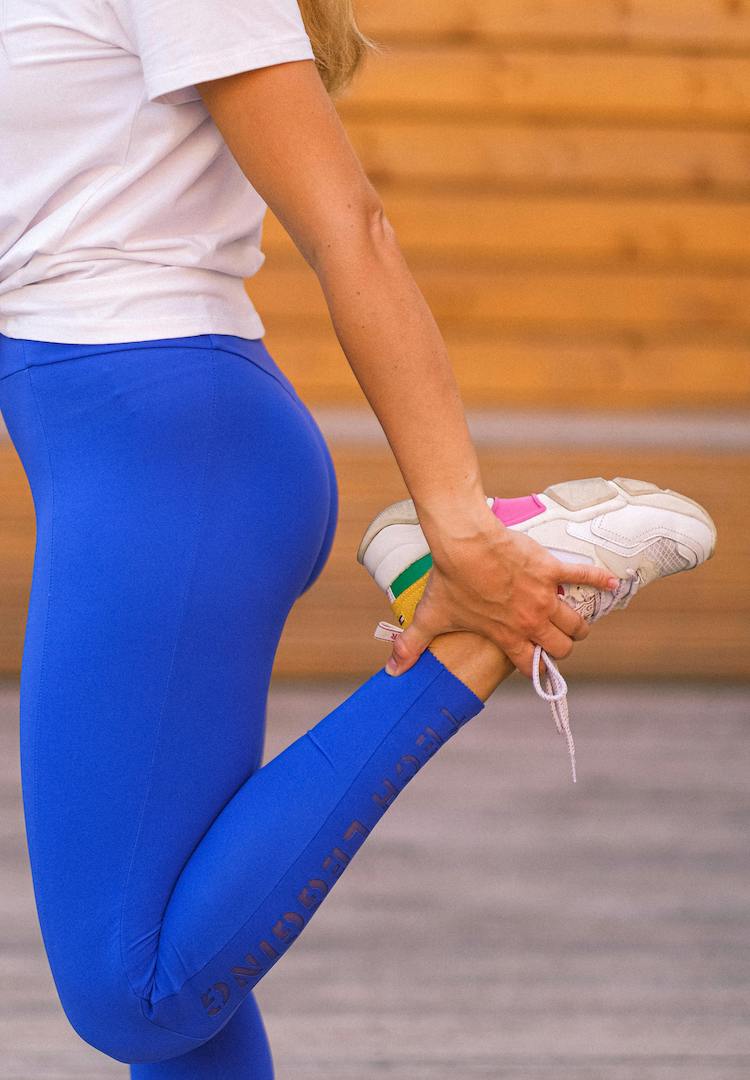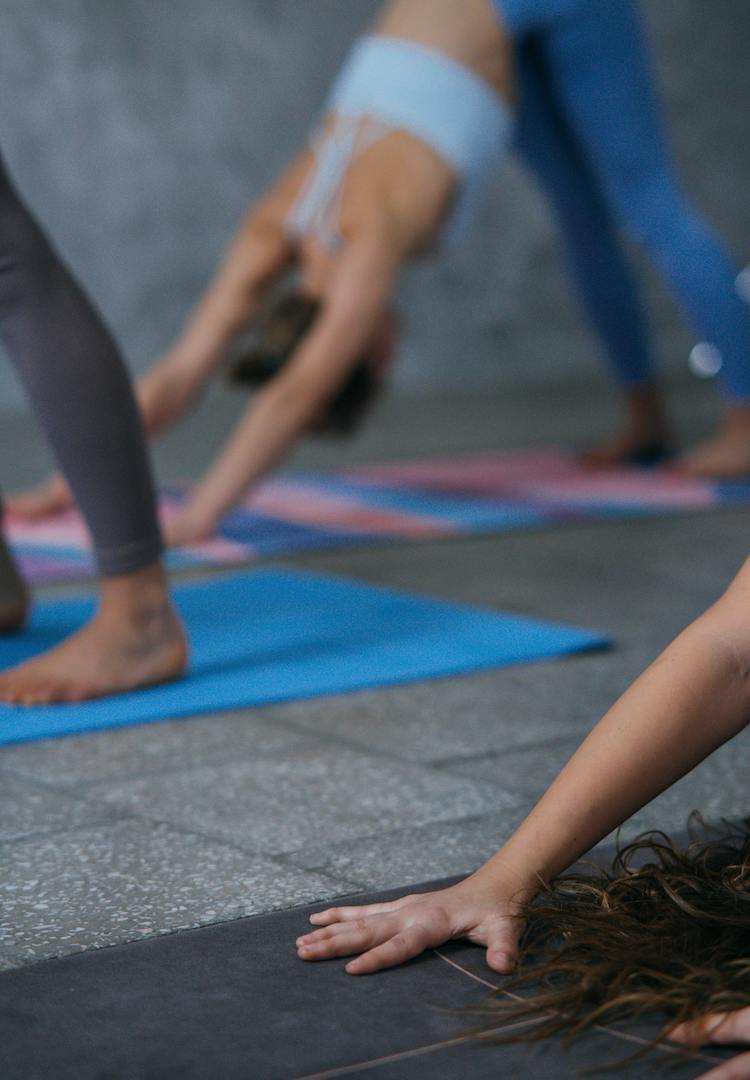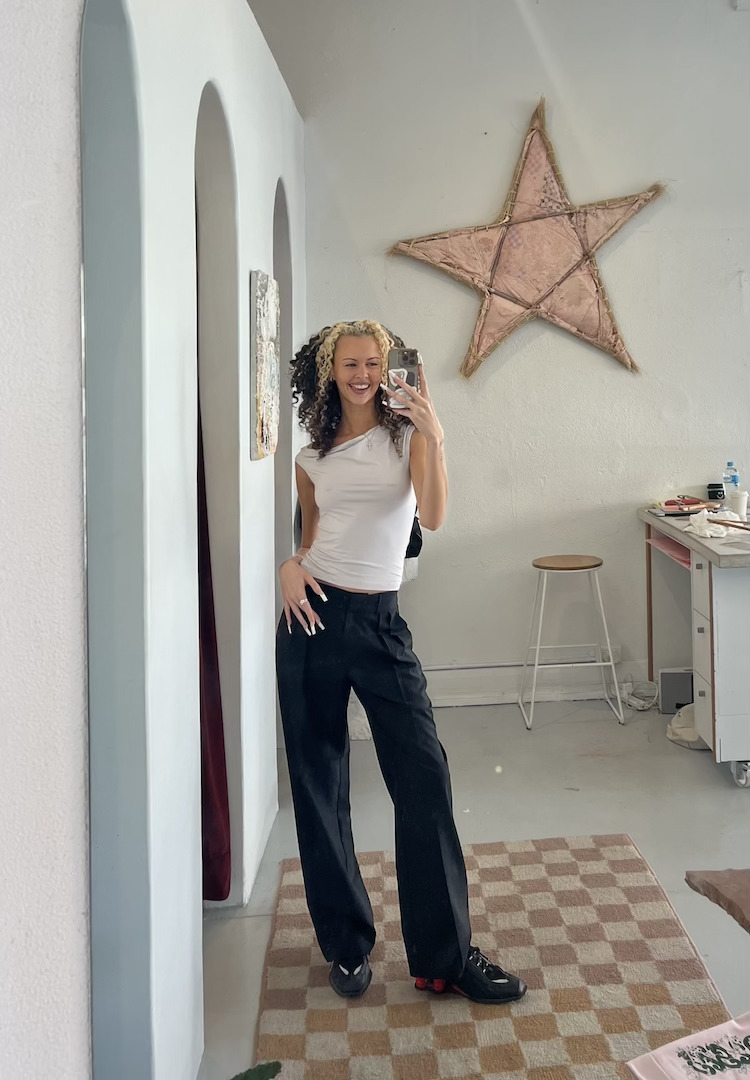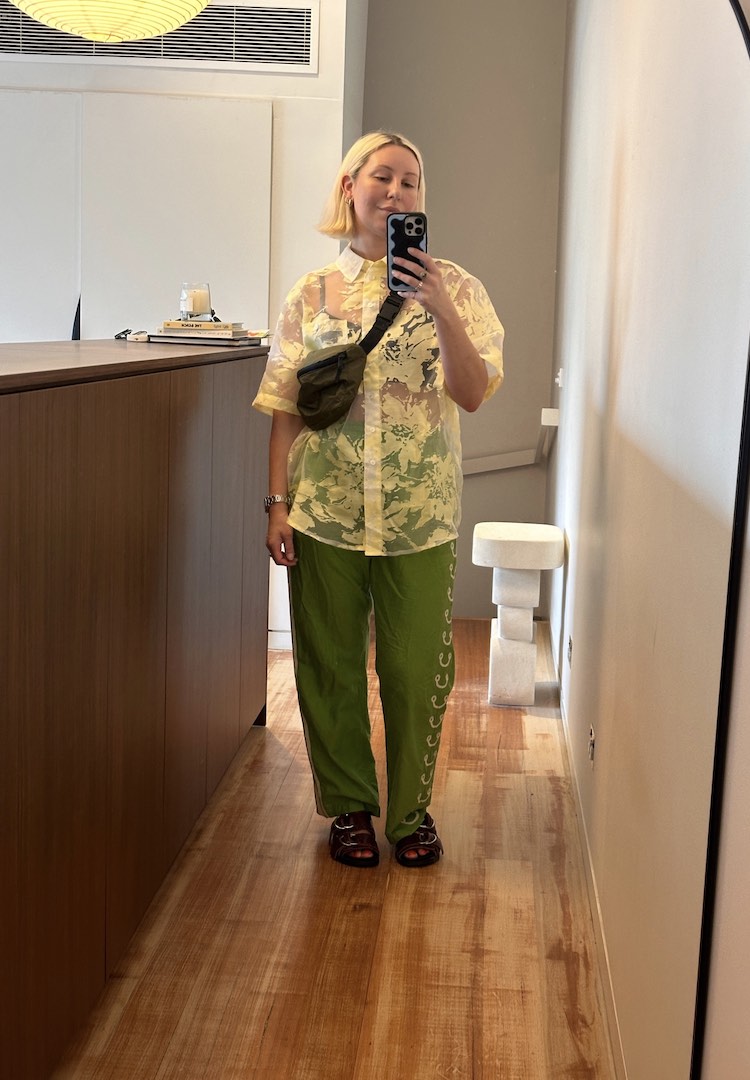How a running app healed my relationship with my body and trained me for a marathon
Image via @siannacatullo/Instagram
Words by Giulia Brugliera
CW: This article discusses eating disorders. If you need support or feel that you might have a negative relationship with your body or food, contact the Butterfly Foundation on 1800 33 4673 or start a live chat here.
Anyone who’s had a verbal conversation with me in the past two years will know I’ve gotten really into running. I can tell you my splits, know the best stretches for your lower-half niggles and drink protein shakes. I run, shockingly, ‘for fun’.
As with many in Melbourne, I started because my gym was closed and I hated wearing a mask while walking. As a city, running soon became our collective hobby. Local running tracks, once desolate on Sunday mornings, became overcrowded. Activewear sales and running app downloads spiked. A slew of op-eds were written about it, meaning we had officially hit peak zeitgeist.
We like nosy people. Don’t be shy, head to our Life section for more.
The city fell in love with running and eventually (you could argue given the relative quietness of The Tan on a Saturday morning), out of it again. But I’ve kept on going.
I found a running app that manages to get me out the door five out of seven days per week and since, have noticed real changes in how I feel. Not just the sweaty, happy, post-workout endorphins high that we’ve all felt, but something more. It’s more a feeling of overall wellbeing, happiness and contentment that lasts long after the cardio chemicals have dried up, or whatever it is they do.
As a person who has battled with restrictive eating disorders and depression, running has become the number one tool in my arsenal for managing mental health and body image. Which, considering eating disorders have the highest fatality rate of any mental illness and over a million Australians are affected, is a huge asset.
But the tricky thing about eating disorders is although exercise can be helpful when it comes to treatment, it can also be part of the eating disorder itself.
“No one would say vomiting is helpful,” explains clinical psychologist and researcher from Monash University Dr Gemma Sharp, who specialises in eating disorders, when discussing this tricky territory with me. “Whereas exercise, we are always mindful that indeed there can be positive impacts, but it’s also part of the disorder.”
I’ve been on both sides of the coin. I used to exercise compulsively as a way to manage my calorie intake, whereas now I prioritise my wellbeing. I move if I feel like it and don’t if I don’t.
It’s taken me a long while to get here. Having trudged through the years-long recovery process myself, I can now look back and pinpoint a few key tools that have been crucial in my healing. They include appointments with a psychologist I trust, medication for additional support, the financial means and security to afford these resources, superhuman patience and understanding from my loved ones, and strangely, the Nike Run Club app.
The exercise paradox
It’s no news to anyone that exercise is one of the best available tools in mental health management. It is free, can be done socially, and is accessible to anyone, regardless of ability or age. The science of it all is a little beyond me, but I know it has something to do with the release of endorphins. Anecdotally, we know it feels good to work out – at least, when it’s all over.
View this post on Instagram
However, for those with eating disorders, exercise can be damaging. It can prove a barrier to recovery and can make an eating disorder even worse. This, of course, means we have to tread with caution when considering exercise (or “bodily movement”, as Gemma prefers to call it) in the context of these conditions. I ask how we can know if a person is ready to start exercising.
“My main thrust is, if your treating team says it’s okay, then by all means [exercise]. But if your treatment team says it would derail your recovery, then you do need to take that advice on board,” says Gemma. “It’s something you can’t necessarily choose alone if you’re committed to recovery.”
Effectively, she tells me, whether it is helpful or a hindrance will turn on a person’s motivations. To determine what these are, Gemma will typically prompt a person to consider a set of questions, almost like a checklist. These include:
- What are my motivations for engaging in running?
- Is it constraining my life rather than enhancing it?
- Is it more a compulsion than a choice?
- Would it be hard to give up running?
- Are there any rules around this activity?
- Are you exercising through illness?
- Would you decline other invitations to exercise?
In my case, one of the first steps my treatment team implemented was to effectively ‘ban’ me from exercise for a temporary period. They asked me to approach this ban in the same way I would tackle an injury – it was not permanent, but I needed to heal before I could try moving again. When I consider the above questions in light of my eating disorder, it was a necessary step.
Through this checklist, we can start to pinpoint a few common denominators that tend to run through ED experiences. For example, a ‘black and white’ thinking is often present in those with eating disorders. A disconnect with one’s body is also common, as rather dramatic physical changes can occur and body dysmorphia sets in. Attachment to numbers can also play a big part, as those with EDs attach metrics to their eating and exercise habits, such as calories or steps.
So it’s interesting then to consider that a running app – that leans largely on numbers and metrics for its success – could prove so healing, at least in my circumstance.
How it works
The app contains a library of audio-guided runs, where a coach talks you through a run from start to finish.
Each ‘run’ within the library is designed around a different goal. There’s a beginner’s library for those who want to get started, distance- and time-based runs, speed runs, even runs to work with your menstrual cycle. The shortest run is a tiny one minute long and the longest sits just over 32 kilometres. Each week a new run is released too, so the library is not only vast, but growing quickly.
Within all this is one set of particularly noteworthy runs. Named the Mindful Running Pack, it’s essentially a hybrid of guided meditation and guided running. It sees the founder of meditation app Headspace join Nike Running’s Head Coach for a handful of runs designed to support your mental wellbeing. There are runs like the ‘stress free run’, the ‘big day run’, and the ‘running on empty run’.
It’s a lot like a guided meditation only you’re moving, which is great for those who struggle with the ‘quiet’ of sitting still. You count your foot strides instead of your breath, and there’s a lot more to consider as you conduct a ‘body scan’, a fundamental of many meditation practices.
In a typical body scan, you might pay attention to each one of your toes, then your feet, then your heels, and so on, moving your way up the body until you get to the top of your head. It’s a reminder of how much in life we don’t notice day-to-day and is a great way to reconnect with your body, rather than feel separate from it.
View this post on Instagram
The app guides you through a similar body scan (here coined a ‘systems check’), but the effects as you run are different than when sitting still. You consider how your joints intersect, how your muscles contract, how your body moves together as a machine. It’s marvellous to realise how your body can move in this way, without you giving it much thought – how your toes grip the earth, how your arms swing, how your lungs adjust their pace.
It’s a moment to reflect on how lucky you are that your body can power an activity that many (perhaps because of age, illness, diverse ability or injury) can’t do.
A shift away from body image
While this notion is powerful in itself, for those with eating disorders, it can be life-changing. It means redirecting thoughts away from criticising how your body looks to instead marvelling at what it can do. Because of this, as Gemma notes, regular bodily movement can have a real impact on recovery
“If we ban people from doing any exercise at all, then we label it as an eating disorder behaviour and we make it all about calories and weight loss, and none of us want that,” she says. “I am all for people engaging their bodies in movement as part of recovery, whether it be running or yoga or something else that they love doing. We know it does have benefits on their mental wellbeing because they’re using their body for a good function – and appreciating their body – which is a huge part of eating disorder recovery.”
I’m not the only runner who can attest to the power of this shift in approach. Nike Running New Zealand Coach and marathoner Lydia O’Donnell has been distance running for most of her life. Naturally, she’s experienced the ups and downs that come with training as a professional athlete and at one point in her early adulthood, developed her own body image concerns.
“I doubted my body and what it could do, purely based off what it looked like,” she says. “I was being told I needed to lose weight to be a better runner, which led to me to losing all confidence in who I was and how I could be successful as a female athlete.”
She tells me it was soon after her return to running, where she adopted a more balanced approach, that she really realised its power in supporting positive mental health. At the same time, she started to notice the impacts that a menstrual cycle (and its corresponding hormones) can have on running. As a result, she spent years researching the links between hormones, mental health and running. It led her to launch a first-of-its-kind Antipodean project, Femmi.
View this post on Instagram
Femmi was born in response to the fact that most training methods have been designed for men, and most sports science research is conducted on men, instead recognising that vulva-owners require a much more holistic approach to training. For most vulva-owners, our hormones are constantly changing throughout the month. That impact of our menstrual cycle on our movement (and mental health) is significant.
“Understanding our physiology is such an important part of feeling empowered in who we are. Knowing that our menstrual cycles could be used as a tool to actually benefit us as athletes made me embrace my body and feel confident in the way it works,” says Lydia.
“Training with, and to, my hormones now gives me the opportunity to go hard when I feel good and pull it back when my body needs more time to recover to ultimately get fitter, faster and stronger.”
Since launching Femmi, Lydia has worked with Nike to create a two-part series of audio guided runs that focus on harnessing your menstrual cycle. They’re in conversation with exercise physiologist and nutritionist Dr Stacey Sims, and a must-run for anyone looking to understand how your hormones might affect your movement and nutritional needs.
Through our conversation, Lydia also reinforces something that I’ve learnt anecdotally: that running requires you to consider food as fuel, or else risk injury. She points to the female athlete-related triad, a term that refers to a constellation of three clinical entities: menstrual dysfunction, low energy availability (with or without an eating disorder), and decreased bone mineral density leading to osteoporosis.
She notes that many female athletes put their body under physical and other stress, which can lead to this triad. As a result, it’s more important for women than men to focus on their energy intake before, during and after exercise – which is interesting when you consider the ‘protein bro’ stereotype and how few similar representations exist for women.
View this post on Instagram
For me, considering food as fuel was a total shift in how I approached eating. If I wanted to run and reach my running goals, I needed to prioritise recovery just as much as my training. This meant ensuring I’d eat enough protein and carbs, which includes a lot of the foods I’d once considered off-limits, like cheeses, breads, pastas, rice, even lollies. Through practice, I slowly learnt to stop ruminating on the calories in my food and instead focus on how they fuelled me.
A formula for happiness
There’s one study by Harvard that’s probably the longest study on adult life that’s ever been done, sitting at 75 years strong. It follows 724 men (sigh) over a lifetime and has generated tens of thousands of pages of information around human life. There’s a really great Ted Talk that summarises the study, and the crux of it is this: Good relationships keep us happier and healthier. In other words, the research affirms just how important social connection is to our happiness.
Runners will also tend to note the ‘sense of community’ that running brings, which can be a hard concept to grasp if you only pop out for an occasional jog. For most people, running is a solo activity. But as I started to run more regularly, I started to form my own connections through running. As someone who tends to ‘withdraw’ when my mental health isn’t great, this has been a significant step in managing my own wellbeing.
Funnily enough, most of those new connections were formed with my already close friends. My sisters and I discuss our training plans, I run with friends before work and on weekends, and the FJ girls have started to share a running playlist. We all j’adore Coach Bennett (Nike Running’s head coach and the voice behind most guided runs) and have all committed to running our own race at this year’s Nike Melbourne Marathon Festival.
We’ll message each other about pace, routes, weather and music, and have proper one-on-one time on the days we do run together. My sister now runs with her father in law, and they’ve found it a nice way to bond. One friend started using the Nike Run Club app to support her mental health during therapy, and regularly tells me how it’s changed her life.
Another special connection I’ve formed through running is with Clothing the Gaps’ Chief Creative Officer, Sianna Catullo. After seeing she’d tackled (and successfully completed) a marathon, she inspired me to try and finish one of my own. She tells me this is precisely why she runs.
“I wanted to run because I wanted to set an example and be a positive role model for my family and community. My family is big. My dad is one of 14 children, I have hundreds of cousins and so many of them have their own kids now. I want to show them that they can do anything they put their mind to. I want to normalise exercise and healthy lifestyles. Hearing that I inspired you, it means a lot.”
View this post on Instagram
Amazingly, when Sianna committed to training for a marathon, she’d never run further than three kilometres (for perspective, a marathon is 42.4 kilometres long). She herself was inspired by a friend from university and he, coupled with her own naivety, spurred Sianna to sign up for the New York City Marathon. Her journey started with an application to the Indigenous Marathon Foundation, which each year selects and trains 12 Aboriginal and Torres Strait Islander people for the race.
Founded by world marathon champion and serial overachiever Rob de Castella (more on him here), it’s designed to celebrate the resilience and achievements of First Nations peoples. Once selected, Sianna began six months of gruelling training on Country around Australia.
“I don’t think I knew what I was getting myself into,” she laughs. “It was probably the best year of my life, meeting amazing people who I’m still really good friends with. Writer [and FJ contributor] Taneshia Atkinson was my roommate in it, now she and I are like best friends.”
As Sianna talks, I quickly realise just how successful she’s been in inspiring others, although she might not realise it. She’s talked friends into five-kilometre park runs, been dragged out the door by colleagues who wanted to support her training, and has this year inspired her housemate to train for the Melbourne half marathon in December.
View this post on Instagram
A final note
There’s a lot more I could add about how the Nike Run Club app specifically has aided my recovery. It’s taught and reiterated simple concepts that are powerful in the context of eating disorder recovery – be kind to yourself, avoid black and white thinking, measure success beyond hard numbers, prioritise how your body and mind feel – and regularly brings me back to my body when I start spinning around in my head.
But if you’re going to take anything away from this absurdly long FJ article it’s this, summarised most neatly by Sianna. “What have you got to lose? You give it a go and you don’t like it, cool. You give it a go and you love it, then you start this amazing journey.”
Of course, it’s crucial to do so safely. If you have a treatment team, be sure to get their sign-off to ensure you can engage in running in the way that Lydia, Sianna and I do. I’ve made that mistake before and it’s not a path you want to go down.
Finally, run through the above checklist around your motivations for exercise one more time. Successful running is all about the approach and to get all the many benefits of running, you need to approach it in the right way. If now is the right time for you, you can download the Nike Run Club app here.
This article was originally published on Nov 22, 2021.
Giulia was a guest of Nike at the 2021 Nike Melbourne Marathon Festival. Read more about the event and sign up here.

